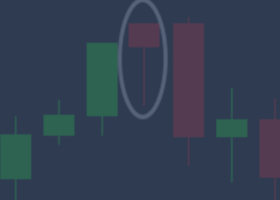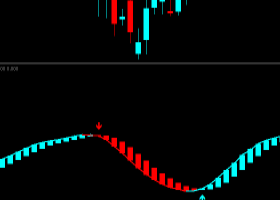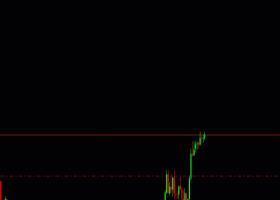Central Bank inability or reluctance to weaken their currencies is radically changing the outlook for most currencies in 2016.
The dollar’s days in the sun are numbered, according to HSBC’s David Bloom, who argues that wider G10 central bank reluctance (or inability) to devalue their currencies – especially in the case of the European Central Bank (ECB) and the Bank of Japan (BOJ) - means there is little scope for the dollar to gain against them.
Previously, expectations had been that the dollar would have a very strong year as a result of the Federal Reserve increasing its interest rates, whilst other central banks would have to continue easing their monetary policies and keeping their interest rates very low or even in negative territory.
The difference in interest rates – high for the US and low for the rest - would lead to a continuation higher in the dollar index.
Currencies tend to appreciate when interest rates are high, as this attracts foreign capital.
Bloom, however, argues this is now unlikely to happen, firstly because the Fed has backtracked on its initial promise to raise rates by 1.0% over the course of the year (now envisaging only a 0.5% rise), and because central banks cutting their interest rates appears to not be having the dampening effect it used to have.
Witness, for example, the last two meetings of the ECB, at which they reduced their deposit rates deeper into negative territory on both occasions and threw in a 0.05% cut to their lending rate at the second meeting. On both occasions the euro actually rose as a result of the news, although on the second occasion the rise was put down to comments from President Draghi about not cutting rates again, but nevertheless, even if that is so it shows it took very little to reverse the euro’s fall.
Copy signals, Trade and Earn $ on Forex4you - https://www.share4you.com/en/?affid=0fd9105
Chorus of Similar Views
HSBC's view echoes that of Credit Suisse, UniCredit and SocGen who have all argued the same point in modified forms over recent weeks.
UniCredit suggested major central banks have stepped back from material easing and exchange rate devaluation.
For example, they cite the BOJ's lack of urgency in preventing the recent 8.5% slide in USD/JPY. As well as the ECB's change in communication away from its previous “exchange rate obsession”. They further cite the Reserve Bank of Australia’s and Bank of Canada’s change in stance with them now less likely to cut interest rates.
Credit Suisse, meanwhile, make a similar call to HSBC, saying EUR/USD will rise to 1.17 by year end, due to the ECB changing tactics and not trying to devalue the exchange rate. They argue that Draghi’s comments about negative rates ‘not going any lower’ were evidence of a change of strategy from the central bank’s governing council away from simply cutting rates.
SocGen’s Alvin Tan, proved right when he said prior to the ECB meeting that the ECB’s firepower was inadequate for moving the EUR/USD exchange rate below it 1.05 floor.
HSBC: Central Bank 'Cease Fire'
Central banks may have changed their strategy to deliberately avoid depreciating their currencies in what had previously been a “currency war”, argues Bloom:
“We believe a truce has broken out in the global currency war. Both the ECB and BoJ seem to have changed tactics. The BoJ cut rates into negative territory rather than just expanding QE and the ECB have switched to using the credit channel rather than blindly trying to drive the EUR lower.”
It is debatable whether central banks have deliberately changed tactics to avoid a currency war, or whether the policies which previously weakened their currencies simply have stopped working, however, the upshot is a lack of down-side potential for the euro, yen and other currencies versus the dollar.
The previously expected divergence between the Fed and its policy of increasing interest rates versus the ECB and BOJ’s rate-cutting agenda, now seems both less acute and also of much less impact on the respective currencies dollar pair exchange rate.
Bloom even goes has far as forecasting the EUR/USD to hit 1.20 by the end of the year:
“The ECB change of tactics is already pushing the EUR higher, supporting our forecast of 1.20 for EUR-USD at year end. “
China Volatility Less Pronounced
A more subdued dollar and stronger euro and yen could lessen the risks coming from China depreciating its exchange rate sharply, and thus decrease the possibility of FX risks stemming from that source:
“These developments are to be welcomed. They will likely ensure policymakers and currencies have fewer headaches to deal with. China, in particular, should see fears of depreciation decline sharply.”
He further adds:
“The stronger EUR and JPY also allow the CNY basket to weaken without the need for an aggressive lurch higher in USD-CNY. Less pressure on China's currency is helping reduce the fear factor around EM FX. EM can now enjoy the benefits of continued developed market monetary easing but without the trauma of sliding exchange rates.”
He goes on to speculate that central banks in Switzerland and Sweden will start to unwind their accommodative programmes as well:
“In European postcodes such as Switzerland and Sweden, the pressure for ever deeper negative rates, bigger QE programmes or direct FX intervention should fade.”
Bloom finishes his note by adding:
“The FX market is adjusting to a new post currency war reality, one which will further undermine the consensus view of USD strength. While we are giving peace a chance, there is always the risk that it turns out to be a phoney truce. Someone could break ranks causing the current virtuous cycle to become vicious again.”



